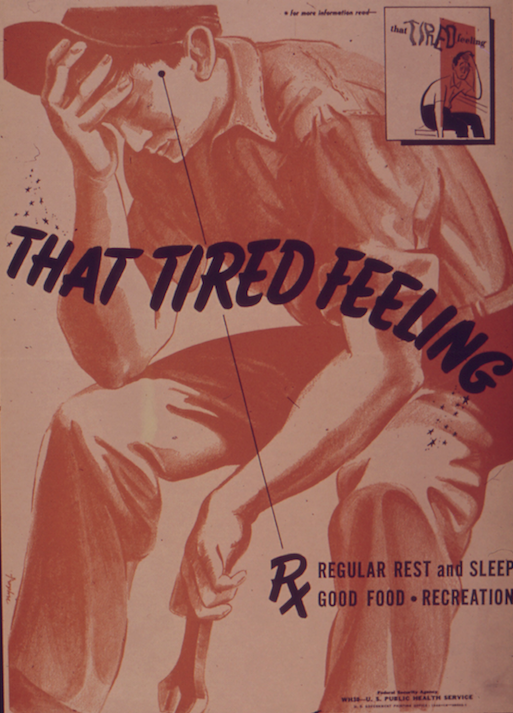By Kate Skelly

Burnout is a problem in all sectors, but non-profit workers can be especially vulnerable to workplace fatigue. Many museum workers face expanding job responsibilities, long hours, and stagnant wages. Koven Smith does a good job of outlining the current spate of museum worker fatigue in his blog post, “Why are we so tired?”.
Becoming overwhelmed at work is not only bad for you, but also for your organization. Good & Co estimates that happy employees are 31% more productive, and three times as creative as unhappy employees. Ultimately, it is in everyone’s best interest that you are thriving at work. With that in mind, we have compiled the following five tips to help you avoid burnout:
1. Set Boundaries
Most non-profit workers see their profession as a calling, and selflessly agree to take on every new project or responsibility that is thrown their way. New projects can quickly add up overtime, however, and could end up sabotaging your core work responsibilities by spreading your attention too thin. Learning to establish clear boundaries at work will ensure that you are able to accomplish everything you set out to do. This Psych Central article, “7 Tips for Setting Boundaries at Work” outlines a few key rules to help you establish healthy boundaries in your work life. The most salient points are that it is important to identify your core values so you can establish conditions at work that allow for your essential needs to be met. Once you’ve established where your boundaries are, be sure to communicate them clearly and consistently.
2. Manage Expectations
If you routinely feel like you have more work on your plate than you can feasibly accomplish, it may be time to learn the art of managing expectations. Expectations for your performance at work ought to be realistic and achievable. Business Insider recommends being proactive, and addressing expectations as soon as you realize that what is being asked of you is unrealistic. Furthermore, Business Insider advises not to be afraid to ask for what you need to meet an expectation. If additional resources or staff are required to accomplish a certain goal, communicate this to your supervisor.
3. Drop Superfluous Tasks
New technology has placed many novel demands on museum workers. Museums feel pressure to keep pace with the newest technology, but often due to necessity these new responsibilities fall on the shoulders of staff with already heavy workloads. The pressure to incorporate every new tool available into your museum work can be intense. It is important to take a critical eye to the work that you are doing, and not be afraid to eliminate tasks or responsibilities that are not effectively serving your organization’s goals. This blog post, “Social Change”, by Shelley Bernstein, the Vice Director of Digital Engagement & Technology at the Brooklyn Museum, will be inspiring to any overtasked museum worker looking for an excuse to trim their workload. In her post, Bernstein discusses how and why the Brooklyn Museum decided to abandon a few of their less-popular social media channels so they could focus their energy on more successful channels.
4. Recharge
One particularly daunting aspect of museum work can be the ceaselessness of it. Between exhibition openings, off-hours installations, weekend programs, and donor cultivation events, you may feel like you never stop working. If this applies to you, and you are teetering on the brink of burnout, it may be a good time to talk to your HR representative or supervisor about flex-work options. There may be an option to adjust your work schedule to reflect the time you are putting in outside of the normal work schedule. If flex-work isn’t an option for you, make sure you are taking adequate breaks during your workday. This NPR article, “We're Not Taking Enough Lunch Breaks. Why That's Bad For Business” cites research that indicates that only 1 in 5 five American workers steps away for a midday meal. Not taking adequate breaks can have a detrimental effect on creative thinking, so be sure to carve out the time to break during your work day.
5. Learn to Delegate
Effectively delegating tasks can have a huge impact on the reach of your work. Knowing when and how to pass responsibilities on to someone else, however, is a skill that does not come naturally to everyone. If you have perfectionist tendencies, it can be very difficult to let go enough to allow someone else to takeover one of your responsibilities. This LifeHacker article, “Use the ‘70% Rule’ to Know When to Delegate Tasks”, offers a handy trick for determining when you should delegate a task to someone else. If someone can do the job 70% right, it is a prime task for delegation. Take a look at your job responsibilities, are there tasks that an intern or volunteer could perform according to the 70% rule?
6. Know that You Are Not Alone
Our final tip for avoiding burnout is to know that you are not alone. You are part of a larger community of museum professionals. When you are feeling drained and overwhelmed at work we encourage you to reach out to the WMA community as a resource. Are you experiencing a specific problem that is confounding you at work? Consider writing about it here on the WestMuse blog to receive feedback from your peers.








Add new comment